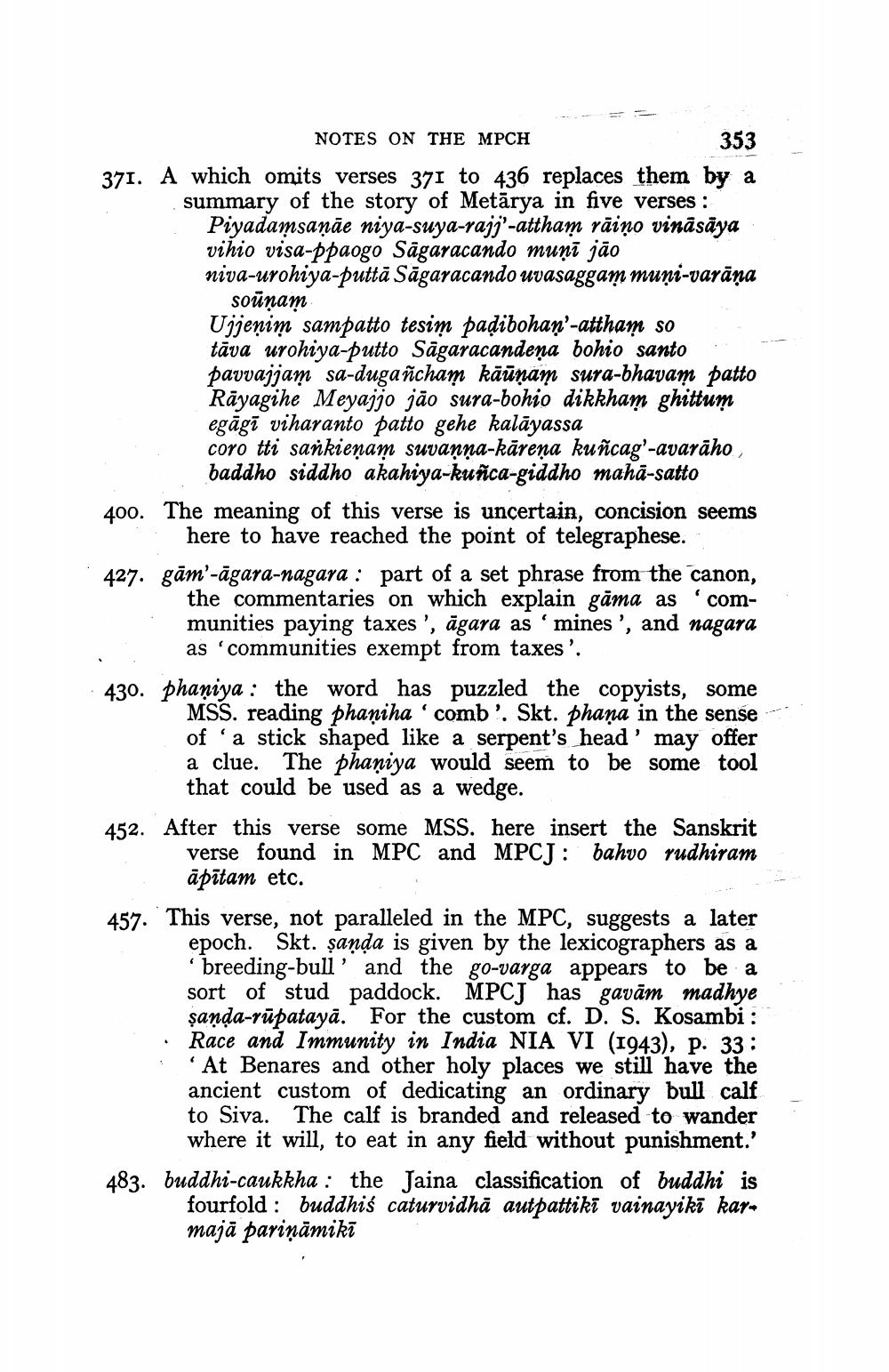________________
NOTES ON THE MPCH
353 371. A which omits verses 371 to 436 replaces them by a
summary of the story of Metārya in five verses :
Piyadamsaņāe niya-suya-raji'-attham rāiņo vināsāya vihio visa-ppaogo Sagaracando muṇī jāo niva-urohiya-puttā Sāgaracando uvasaggam muni-varāna
soūņam Ujjeņim sampatto tesim padibohan-attham so tāva urohiya-putto Sāgaracandena bohio santo pavvajjam sa-dugañcham kāūnam sura-bhavam patto Rāyagihe Meyajjo jāo sura-bohio dikkham ghittum egāgā viharanto patto gehe kalāyassa coro tti sankienam suvanna-kāreņa kuñcag'-avarāho
baddho siddho akahiya-kuñca-giddho mahā-satto 400. The meaning of this verse is uncertain, concision seems
here to have reached the point of telegraphese. · 427. gām'-āgara-nagara : part of a set phrase from the canon,
the commentaries on which explain gāma as 'communities paying taxes', āgara as 'mines ', and nagara
as 'communities exempt from taxes'. 430. phaniya : the word has puzzled the copyists, some
MSS. reading phaniha' comb!. Skt. phana in the sense of 'a stick shaped like a serpent's head' may offer a clue. The phaniya would seem to be some tool
that could be used as a wedge. 452. After this verse some MSS. here insert the Sanskrit
verse found in MPC and MPCT: bahvo rudhiram
āpītam etc. 457. This verse, not paralleled in the MPC, suggests a later
epoch. Skt. şanda is given by the lexicographers as a
breeding-bull' and the go-varga appears to be a sort of stud paddock. MPCJ has gavām madhye şanda-rūpatayā. For the custom cf. D. S. Kosambi : Race and Immunity in India NIA VI (1943), p. 33:
At Benares and other holy places we still have the ancient custom of dedicating an ordinary bull calf to Siva. The calf is branded and released to wander
where it will, to eat in any field without punishment.' 483. buddhi-caukkha : the Jaina classification of buddhi is
fourfold : buddhiś caturvidhā autpattikī vainayikī kaymajā pariņāmiki
AL




